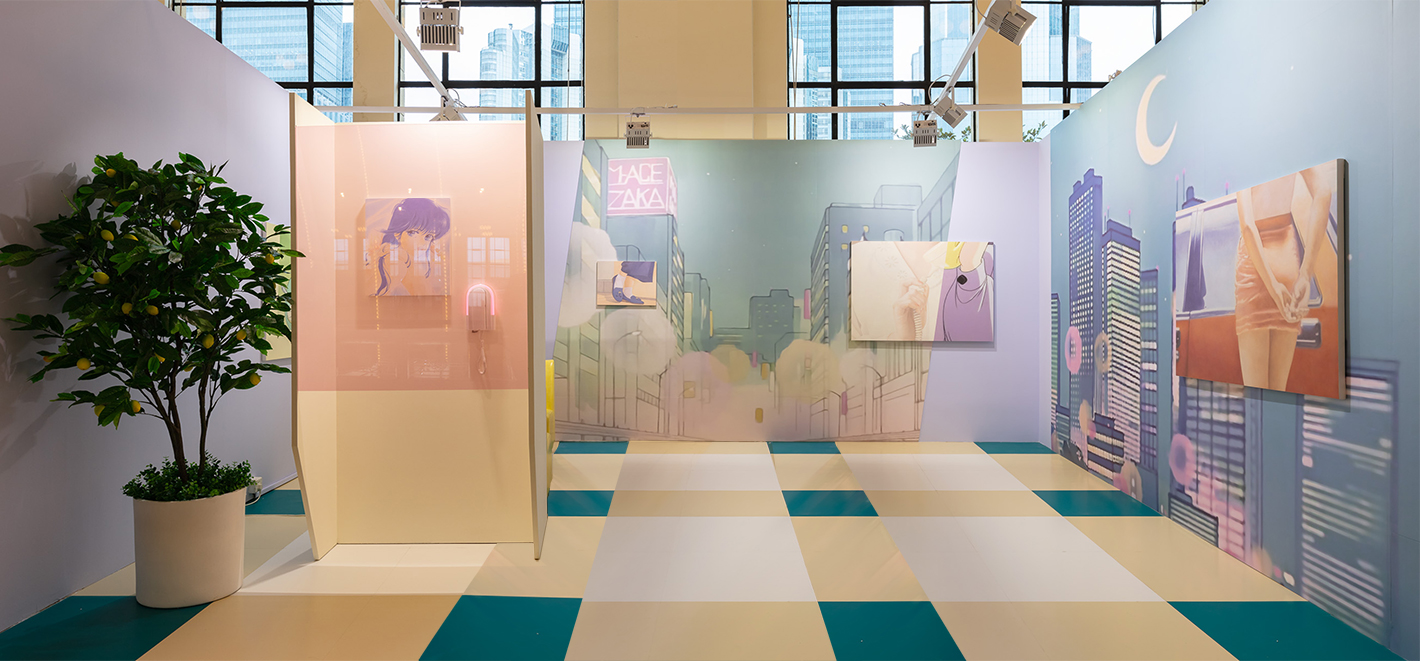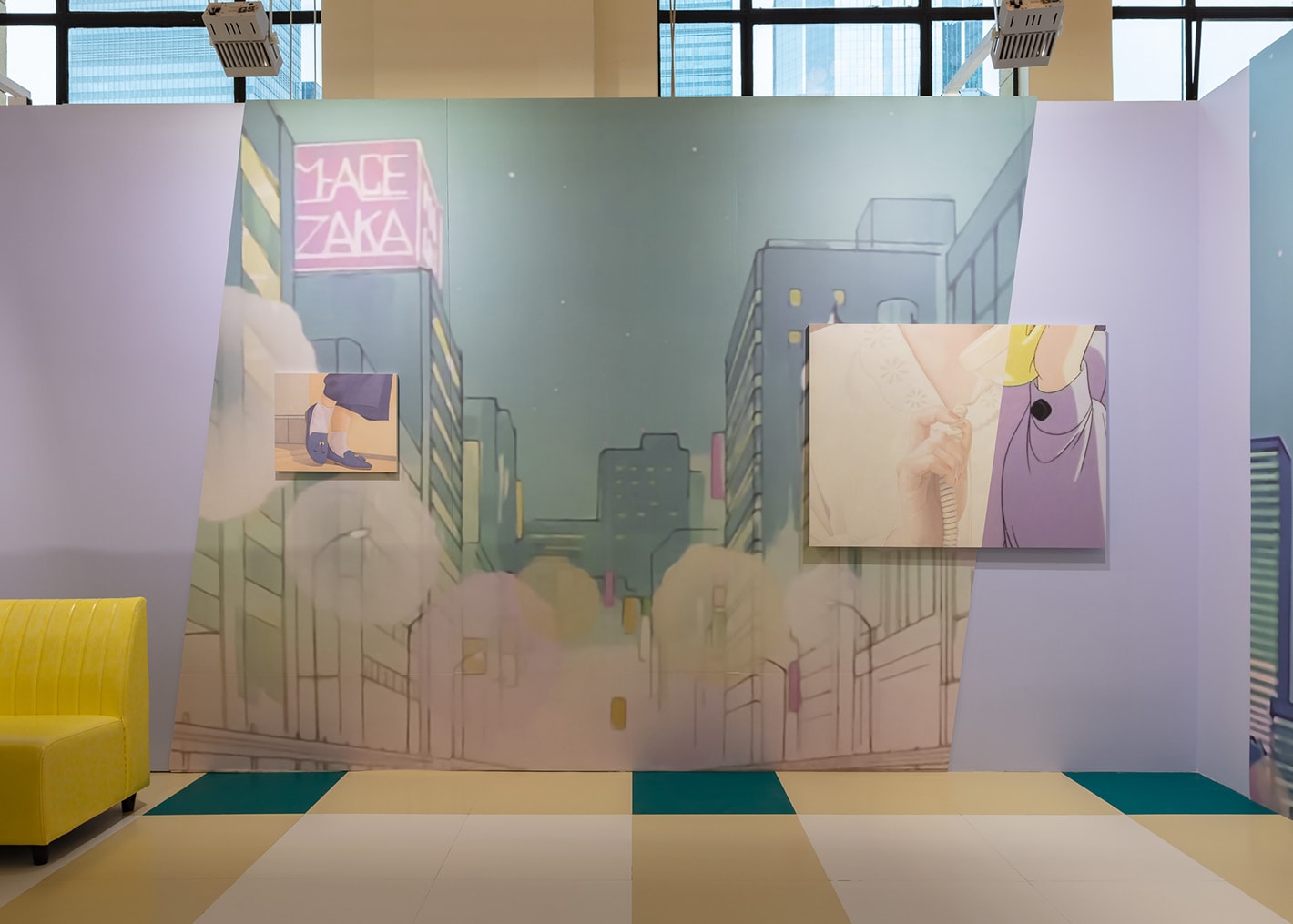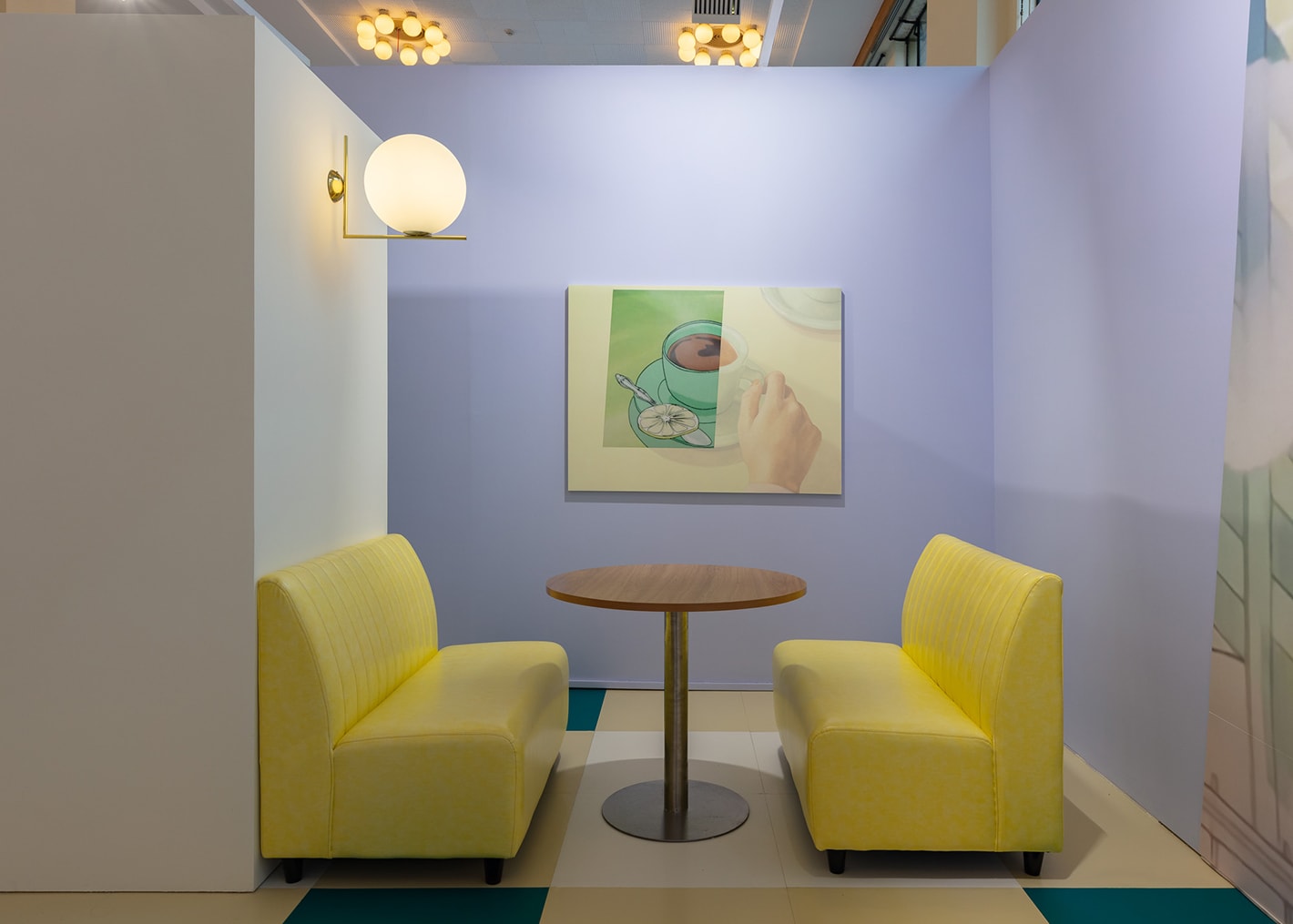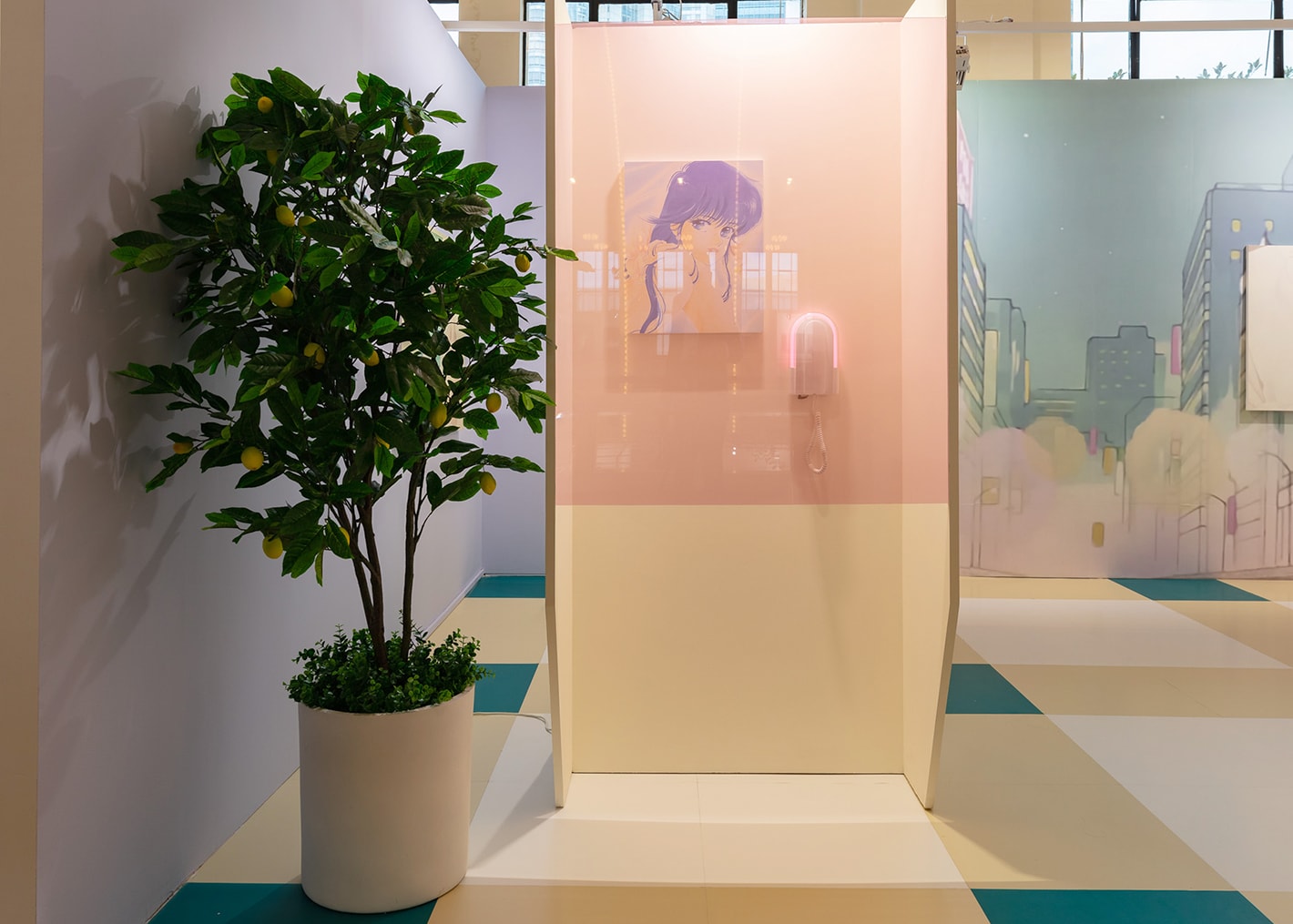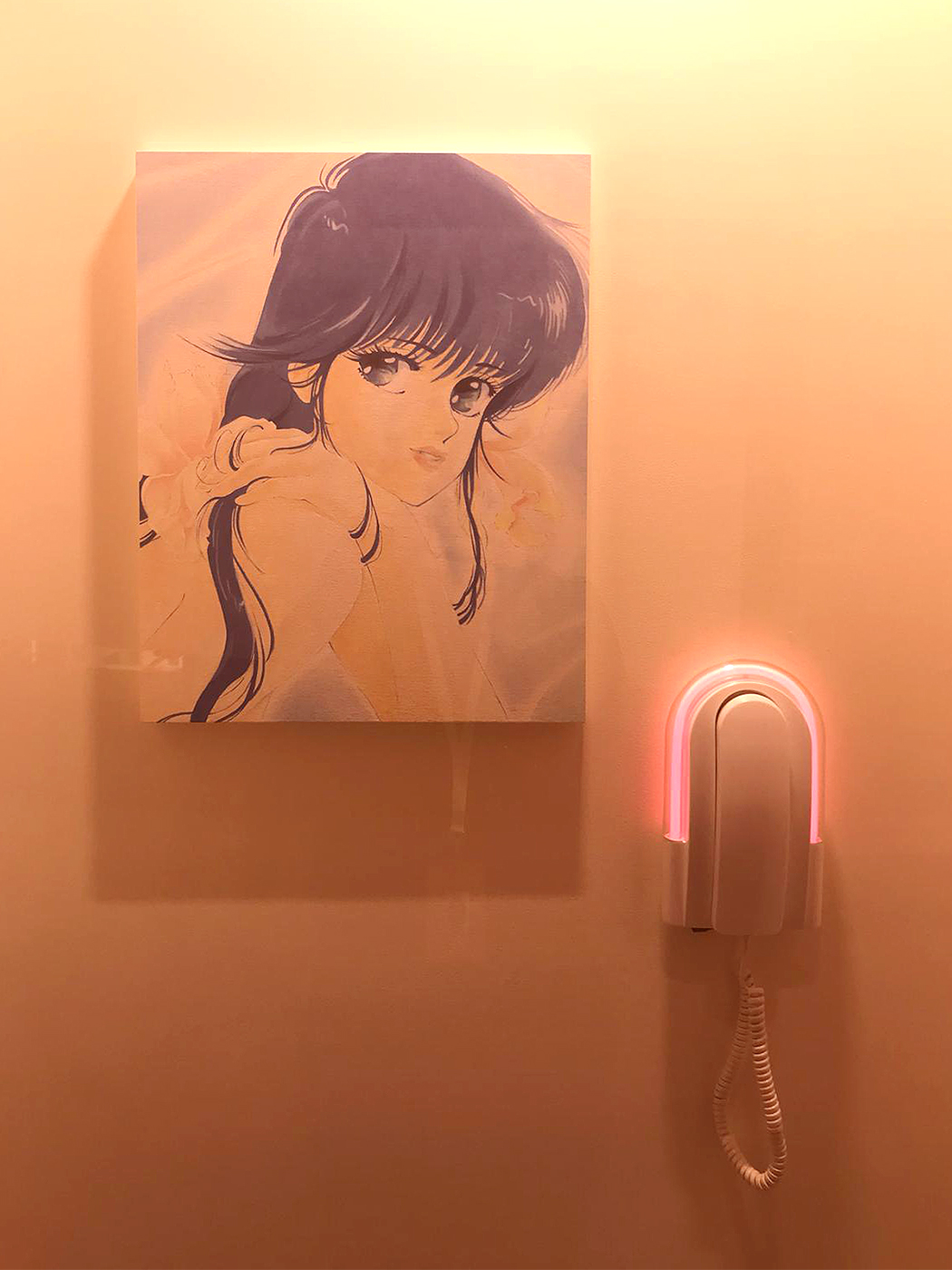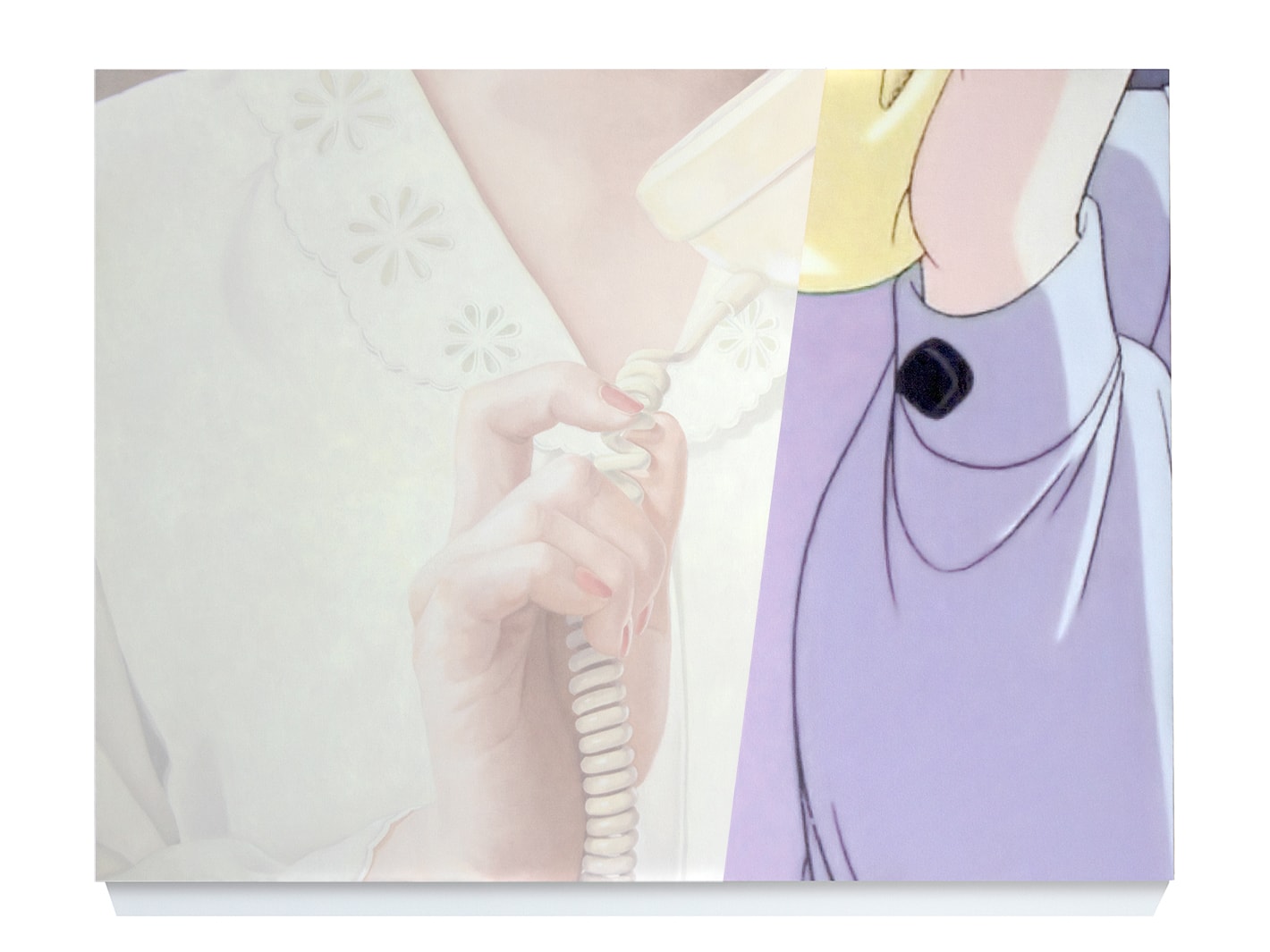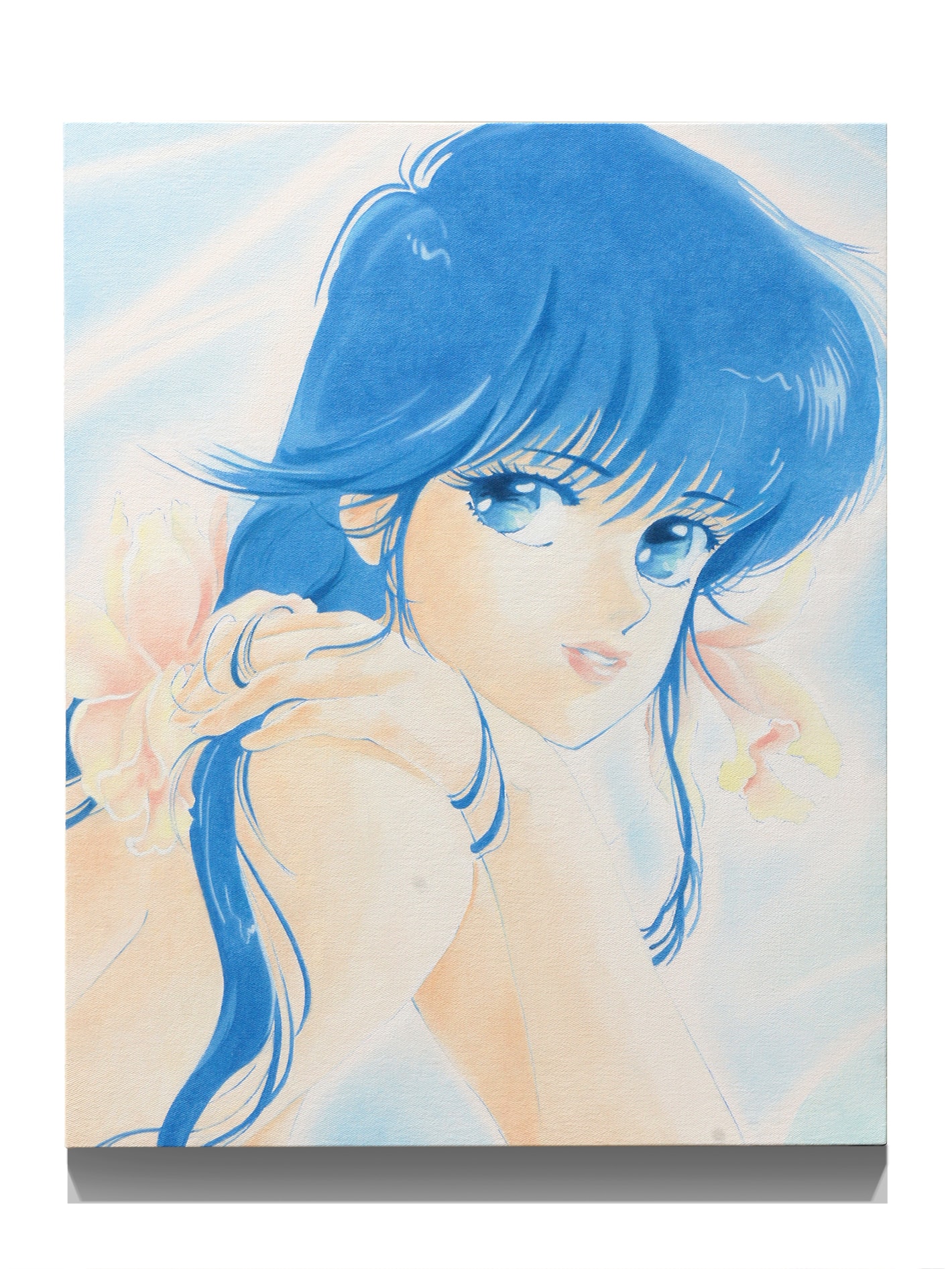Booth: Approach P05
Venue: Shanghai Exhibition Center, Shanghai, China
Collector preview:
8.11.2018 (Thursday), 2‑8pm
9.11.2018 (Friday), 1‑9pm
Blindspot Gallery is delighted to present a new solo project – titled “Kyuusekkin! (Love SOS)” – at this year’s ART021 Shanghai Contemporary Art Fair. With a continuing focus on oil paintings, Lai’s recent art practice has evolved to integrating other mediums including installations and videos, where she deepens her experimentation with the display of her paintings, the mise en scène, and the atmosphere of the space, orchestrating the viewers’ encounter and entrance into her works. Lai is particularly fascinated by existing images in the media, and her creative practice for the most part investigates renewed ways of seeing and reading these images. Through the merging of perceptual experiences, personal memories and cultural archives, she works to capture the textural nuances of a certain place and a certain moment. Lai’s most recent projects investigate the aesthetics and visual culture of the 1980s-90s, drawing inspiration and source materials from the film, television, advertisement, packaging and publication of that era.
The new project “Kyuusekkin! (Love SOS)” takes its theme from the culture of Japanese anime, which was widely popular in Asia in the 1980s-90s. Back in the days, prior to widespread advances in computer-generated imagery (CGI), cartoon animations were all hand-drawn. Animators efficiently narrate storylines in simple and significant scenes, drawing them in clean, minimal outlines without redundant details. Lai regards the cartoon animation from this era as an exemplar of effective visual language and communication, in addition to being a collective memory shared by a whole generation.
Lai models the exhibition booth on the setting of an old-style Western café in Japan in the 1990s. The walls display the backdrop of a night-time cityscape, as the sky blushes with bright colours over the streets of Minato-ku in Tokyo. Faux-leather seats, vintage coffee table, retro-futuristic neon light telephone, square floor tiles, indoor phone booth … these material objects articulate concisely the historical background and location of the scene.
Sarah Lai screen-captures and enlarges classic scenes in cartoon animations, and analyses the visual signifiers that were once meaningful and now turned into clichés. With a careful direction of models, clothing and props, the artist restages and photographs some of these scenes in real life, and then transforms these representations into paintings. The scene does not show upfront the protagonist’s face or expressions, but implies or suggests her psychological state through the portrayal of side actions, gestures and functional objects. In Waiting for your voice, the heroine holds the telephone handset with her left hand, while her right hand nervously fidgets with the coils of the telephone cord. Will the person she yearns for pick up the call on the other end? Feeling stirred – The rolling first date shows the heroine gently reaching for the tea cup, while the freshly made tea is still too hot and needs waiting. In Midnight temptation, the red sports car is stopping in front of the heroine in a mini dress. Is that the arrival of the date she awaits for? Without an identifiable character and definite plots, the uncertainty in these pictorial spaces triggers a chain of emotional reaction – anticipation, perturbation, doubts, and longing.
In the post-Internet age, images are constantly produced, disseminated, browsed, stored, archived, and appropriated. In this circulatory loop, viewers easily lose patience for perceiving images, and tend to opt for those with greater visual impact and stimulation. Lai rethinks the essence of images by re-considering how paintings, as a visual language, can regenerate the creation, presentation and reading of an image. Lai is not pursuing the acquisition of meaning in paintings, but rather approaching it as an intuitive medium for affective response.


